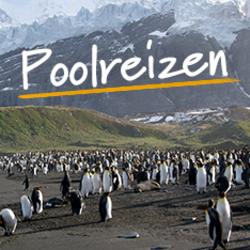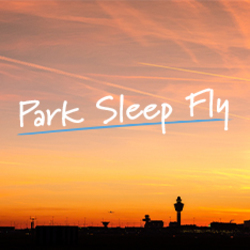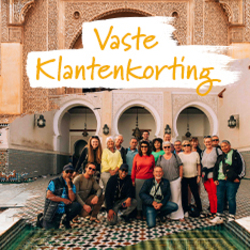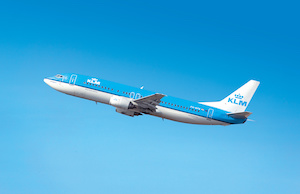Profiteer t/m 12 mei
BekijkActivities
- Culture
- Cultural Wonders
- — Enjoy time to explore Tashkent, the capital of Uzbekistan — Visit the Kunya-Ark, the 12th-century fortress of the Khans — Discover Bukhara, a city with more than 900 historic monuments — Spend the night in a traditional yurt camp — Explore Samarkand, the greatest city on the Silk Road
Food
-
1
Start Tashkent; city tour.
Those on the group flights arrive this morning in Tashkent and transfer to the hotel for a rest. In the afternoon we will start our sightseeing of this Central Asian capital. This will include visiting Independence Square flanked by public buildings and water fountains and also the Old City with its mausoleums and bazaar. Tashkent was largely destroyed by earthquakes in the 60's and was rebuilt in true Soviet style with pleasant leafy boulevards and lots of fountains to keep the heat down in summer. There are some very interesting museums as well as mosques.Gabrielle Hotel or similar, Standard Hotel
-
1
Start Tashkent; city tour
The adventure begins at our hotel in Tashkent. In the afternoon, we start our sightseeing of this Central Asian capital. This includes visiting Independence Square, which is flanked by public buildings and water fountains, and the Old City, home to mausoleums and bazaar. Tashkent was largely destroyed by earthquakes in the 1960s and was rebuilt in true Soviet style with pleasant leafy boulevards and lots of fountains to cool the summer heat. There are also very interesting museums and mosques. Check-in on arrival is included today for those who arrive on flights in the early hours of the morning. Accommodation: Gabrielle Hotel or Milan Hotel (or similar)
-
2
Fly to Urgench; transfer to Khiva; city tour.
In the early morning we fly to Urgench, our base for our visit to Khiva and the Desert sites. On arrival, we transfer to Khiva and visit the living museum of the perfectly restored old city. We will see the khan's old residence, the Kunya-Ark 12th century fortress, the tiled base of the never completed Kalta Minar, (which was originally planned to be taller than any minaret in Bukhara) and the beautiful mausoleum of Pakhlavan Makhmud (Khiva's patron saint) with its tiled courtyard. Many wedding parties and pilgrims come to visit the tomb and drink the water from the well in the courtyard.Please Note: On occasion, it may not be possible to secure seats for the group on the flight to Urgench. In this instance, we will buy flights to Nukus instead, and the activities on days 2 and 3 (land only) will be reversed.Malika Khiva Hotel / Malika Khorezm, or similar, Standard Hotel
-
2
Fly to Urgench; transfer to Khiva; city tour
In the early morning, we fly to Urgench, our base to visit Khiva and the desert sites. On arrival, we transfer to Khiva and visit the living museum that is the perfectly restored old city. We see the khan's old residence, the Kunya-Ark 12th-century fortress, the tiled base of the never-completed Kalta Minar (which was originally planned to be taller than any minaret in Bukhara) and the beautiful mausoleum of Pakhlavan Makhmud (the patron saint of Khiva). Many wedding parties and pilgrims visit the tomb and drink water from the courtyard well. Please note: On occasions, it may not be possible to secure seats for the group on the flight to Urgench. In this instance, we will buy flights to Nukus instead, and the activities today and tomorrow will be reversed. Additionally - select departures of this trip feature extra inclusions to mark Exodus's 50th year: a visit to the world’s second largest collection of Russian avant-garde art – the Savitsky Museum in Nukus, a local meal at Ayaz Kala and a special edition Exodus kitbag. On these dates we'll fly to Nukus rather than Urgench. Accommodation: Malika Khiva Hotel or Malika Kheivak (or similar)
-
3
Visit the desert castles of Toprak Qala, Qizil Qala and Ayaz Qala.
After breakfast, we head off to the arid plains of Khorezm. These plains were once densely populated marshland, inhabited by Messagetae Scythians. These horseback archers were nomadic and fought to retain the land, even defeating Cyrus The Great, a Persian emperor in BC 529. We visit the 2000-year-old ruined city fortress of Toprak- Qala, dramatically located with the Sultan Vais Mountains acting as a backdrop. The settlement began in the first century BC under Kushan patronage and was later devastated by Turkish raids that led to the depopulation of the town in the sixth century. There are still three large round towers and an impressive portion of the citadel that still remain, but the parchments and paintings that were found there are now in St Petersburg's Hermitage Museum. We also visit Qizil-Qala, formerly an important oasis with an impressive amount of remaining buildings and finally Ayaz-Qala, an imposing hilltop fortress dating from the Sixth century. We later return to Khiva to spend the night.Malika Khiva Hotel / Malika Khorezm, or similar, Standard Hotel
-
3
Visit the desert castles of Toprak Qala, Qizil Qala and Ayaz Qala
After breakfast, we head to the arid plains of Khorezm, which were once densely populated marshlands, inhabited by Messagetae Scythians. These nomadic horseback archers fought to retain the land, even defeating Persian emperor Cyrus the Great in 529 CE. We visit the 2,000-year-old ruined city fortress of Toprak-Qala, dramatically located with the Sultan Vais mountains as a backdrop. The settlement began in the first century BCE under Kushan patronage and was later devastated by Turkish raids that led to the depopulation of the town in the sixth century. Three large round towers and an impressive portion of the citadel remain, but the parchments and paintings found there are now in St Petersburg's Hermitage Museum. We also visit Qizil-Qala, formerly an important oasis with an impressive amount of remaining buildings, and finally Ayaz-Qala, an imposing hilltop fortress from the sixth century. We later return to Khiva to spend the night. We travel approximately 185 miles (300 km) today, meaning around 6 hours in the vehicle over the course of the day. Accommodation: Malika Khiva Hotel or Malika Kheivak (or similar)
-
4
Drive across Central Asian Plateau and through desert to Bukhara.
A long day's drive on bad roads to Bukhara (approx 10/11 hours); first we cross the fabled Amu-Darya (Oxus) River and then the Kizilkum Desert. If time allows we may have the chance to make a first visit to old Bukhara and have a cup of green tea at the fascinating chai-khana (tea-house) at 'Laby Khauz' (one of the water-filled stone pools).We will break up the journey today with stops en route.Hotel Kavsar / Hotel Sultan, or similar, Standard Hotel
-
4
Drive across Central Asian Plateau and through desert to Bukhara
Today we take a 6 to 8-hour drive on sometimes poor roads to Bukhara, first crossing the fabled Amu-Darya (Oxus) River and then the Kizilkum Desert. If time allows, we may make a first visit to old Bukhara and have a cup of green tea at the fascinating chai-khana (tea house) at Laby Khauz (one of the water-filled stone pools).We break up the journey today with stops en route. Accomodation: Kavsar Boutique Hotel or Kabir Hotel (or similar)
-
5
Two days to explore Bukhara, including the 12 Century Char Minar, Bolo Khauz Mosque and the old Summer Palace of the Emirs.
We have two days sightseeing in Bukhara, the next of our great Central Asian cities. Bukhara boasts over 900 historical monuments, here we will spend time visiting many sites and wandering at leisure amongst the old city streets. Unlike Samarkand, the district of the old town has remained separate from the rest of Bukhara and has undergone lots of restoration and preservation in recent years. In addition to its importance as a trading centre, it is the perfect setting to just sit and watch the world go by much as it has done for hundreds of years. Of particular interest is the Fortress Ark where, in the 19th century, the Emir of Bukhara had the English officers Stoddart and Connolly imprisoned and killed and the mausoleum of Ismail Samani, a beautiful example of early Islamic architecture dating back to the 10th century. We will also visit the Emir's rather kitsch Summer Palace, the old town with its domed bazaars and khauz (stone pools which used to be the city's only water supply), and the attractive 12th century Char Minar. One of the great landmarks of Bukhara is the Kalyan minaret, known as the death tower, where many an unfaithful wife has met a sticky end.Hotel Kavsar / Hotel Sultan, or similar, Standard Hotel
-
5
Two days to explore Bukhara, including the 12th-century Char Minar, Bolo Khauz Mosque and the old Summer Palace of the Emirs
We have two days sightseeing in Bukhara, the next of our great Central Asian cities. Bukhara has more than 900 historic monuments, and we spend time visiting many sites and wandering at leisure among the old city streets. Unlike Samarkand, the district of the old town has remained separate from the rest of Bukhara and has undergone lots of restoration and preservation in recent years. In addition to its importance as a trading centre, it is the perfect setting to sit and watch the world go by much as it has done for hundreds of years. Of particular interest is the Fortress Ark where, in the 19th century, the Emir of Bukhara had the English officers Stoddart and Connolly imprisoned and killed, and the mausoleum of Ismail Samani, a beautiful example of early Islamic architecture dating to the 10th century. We also visit the Emir's rather kitsch Summer Palace, the old town with its domed bazaars and khauz (stone pools, which used to be the only water supply for the city), and the attractive 12th-century Char Minar. One of the great landmarks of Bukhara is the Kalyan minaret, known as the death tower, where many an unfaithful wife has met a sticky end. Accommodation: Kavsar Boutique Hotel or Kabir Hotel (or similar)
-
7
Drive via Gijduvan and Rabad Malik to our yurt camp in the desert.
From Bukhara we transfer to Gijduvan, which is renowned for its ceramics school. The skills have been passed from generation to generation and today Gijduvan is home to the sixth generation of potters from Narzullayevs family. There will be a chance to visit the Museum of Ceramics and perhaps you might like to pick a souvenir at the potter’s shop. We'll be treated to some tea and Uzbek sweets here too!Next, we drive to Rabat-i-Malik (a few kilometres before Navoi city) - mediaeval ruins of the Karakhanid epoch, where we make a short stop. This site was a portal of the caravanserai but sadly much of the rest of the rabat was destroyed in the 1968 earthquake. We'll stop for lunch in Navoi and then drive to our Kazakh yurts. These are traditional round felt tents, which are spacious, colourful and comfortable inside. The Kazakh nomads still use them today. Our camp offers a glimpse into what life was like on the Silk Road in times gone by and with a bit of luck we will watch a wonderful sunset, and then sit around the fire listening to a local musician (akyn).Yurt Camp (multi-share, 3-4 people to a yurt)
-
7
Drive via Gijduvan and Rabad Malik to our yurt camp in the desert
From Bukhara we transfer to Gijduvan, which is renowned for its ceramics school. The skills have been passed from generation to generation and today Gijduvan is home to the sixth generation of potters from the Narzullayevs family. There will be a chance to visit the Museum of Ceramics and perhaps you might like to pick a souvenir at the potter’s shop. We'll be treated to tea and Uzbek sweets here too. Next, we drive to Rabat-i-Malik (a few kilometres before Navoi city) – medieval ruins of the Karakhanid epoch, where we make a short stop. This site was a portal of the caravanserai but sadly much of the rest of the rabat was destroyed in the 1968 earthquake. We'll stop for lunch in Navoi and then drive to our Kazakh yurts. These are traditional round felt tents, which are spacious, colourful and comfortable inside. The Kazakh nomads still use them today. Our camp offers a glimpse into what life was like on the Silk Road and with a bit of luck we will watch a wonderful sunset, and then sit around the fire listening to a local musician (akyn). We'll drive about 180 miles (300 km) today, taking about five hours in total with stops along the way. Accommodation: Yurt camp (three to four people per yurt)
-
8
Free time at Aidarkul Lake; visit Nurata, then continue to Samarkand.
Today we walk and there is also the chance to ride camels for a short time towards Aidarkul Lake. The lake stretches through the desert within sight of the Nuratin Mountains and once there we are free to explore the shoreline or swim. Later, we transfer to Nurata, formerly known as Nur and founded in the 3rd Century BC by Alexander the Great. This ancient town was once regarded as the frontier between the cultivated lands and the steppes, and the ruins of Alexander's hilltop citadel stand testament to its ancient history. The city was also an important Muslim place of pilgrimage, reaching its peak in the 10th Century AD as devotees flocked to its many significant graves and memorials. We stop at a 10th-century mosque and holy sites that have attracted pilgrims from all over Central Asia. After a traditional lunch at a teahouse we will drive to Samarkand.Please note that it is not possible for the whole group to ride camels at the same time due to camel numbers.Dilshoda Hotel / Malika Prime Hotel or similar, Standard Hotel
-
8
Free time at Aidarkul Lake; visit Nurata, then continue to Samarkand
Today we walk and there is also the chance to ride camels for a short time towards Aidarkul Lake. The lake stretches through the desert within sight of the Nuratin Mountains; once there, we are free to explore the shoreline or swim. Later, we transfer to Nurata, formerly known as Nur and founded in the third century BCE by Alexander the Great. This ancient town was once regarded as the frontier between the cultivated lands and the steppes, and the ruins of Alexander's hilltop citadel stand testament to its ancient history. The city was also an important Muslim place of pilgrimage, reaching its peak in the 10th century as devotees flocked to its many significant graves and memorials. We stop at a 10th-century mosque and holy sites that have attracted pilgrims from across Central Asia. After a traditional lunch at a teahouse, we drive to Samarkand, a journey of about 215 miles (350 km), taking around five hours. Please note, it is not possible for the whole group to ride camels at the same time due to camel numbers. Accommodation: Dilshoda Hotel or Ideal Hotel (or similar)
-
9
Full day tour in Samarkand visiting Registan Square, Ulugbek Observatory and Mausoleum of Tamerlane.
Samarkand is truly a jewel of the ancient and modern Silk Road. We have a busy full day taking in all the sights. There is the exquisite jade mausoleum of Gur-i-Emir, the resting place of Tamerlane, who is now being rapidly reinstated by the Uzbek government as a national hero. Perhaps the greatest treasure is Registan Square, Tamerlane's outstanding creation, a vast complex of domes and minarets, mosques and medrassas. We will also visit the equally beautiful necropolis of Shah-i-Zinda and the old observatory of Uleg Beg, the greatest Muslim astronomer. Samarkand is still a major centre for textiles, carpets and works of art and is the perfect city to try out bargaining skills and explore the ancient site of the bazaar.Dilshoda Hotel / Malika Prime Hotel or similar, Standard Hotel
-
9
Full-day tour in Samarkand visiting Registan Square, Ulugh Beg Observatory and Mausoleum of Tamerlane
Samarkand is a jewel of the ancient and modern Silk Road. We have a busy full day, taking in all the sights. There is the exquisite jade mausoleum of Gur-i-Emir, the resting place of Tamerlane, who is now being rapidly reinstated by the Uzbek government as a national hero. Perhaps the greatest treasure is Registan Square, Tamerlane's outstanding creation, a vast complex of domes and minarets, mosques and medrassas. We also visit the equally beautiful necropolis of Shah-i-Zinda and the old observatory of Ulugh Beg, the greatest Muslim astronomer. Samarkand is still a major centre for textiles, carpets and art and is the perfect city to try your bargaining skills and explore the ancient site of the bazaar. Accommodation: Dilshoda Hotel or Ideal Hotel (or similar)
-
10
Free morning; return to Tashkent.
This morning is left free for us to enjoy just a little more time in Samarkand. Perhaps a visit to the local bazaar where you can sample delicious fresh produce, or you might like to return to the many stalls nestled in the Registan Ensemble to find that perfect souvenir. Our adventure in Uzbekistan is almost complete as we leave Samarkand and take a high-speed train back to Tashkent in the late afternoon (please note that the train cannot be 100% guaranteed as occasionally it is booked out by government officials or is unavailable, in which case we will drive instead). Tonight we have a farewell dinner to mark the end of our travels together and reflect on all we have seen.Gabrielle Hotel or similar, Standard Hotel
-
10
Free morning; return to Tashkent
This morning is left free for us to enjoy just a little more time in Samarkand. Perhaps visit the local bazaar to sample delicious fresh produce, or maybe return to the many stalls in the Registan Ensemble to find that perfect souvenir. Our adventure in Uzbekistan is almost complete as we leave Samarkand and take a high-speed train back to Tashkent in the late afternoon (please note, the train cannot be guaranteed as occasionally it is booked out by government officials or is unavailable, in which case we will drive instead). Tonight, we have a farewell dinner to mark the end of our travels and reflect on all we have seen. Accommodation: Gabrielle Hotel or Milan Hotel (or similar)
-
11
End Tashkent
Those on the group flights will be taken to the airport for their flight. For land only passengers, the trip ends after breakfast.
-
11
End Tashkent
The trip ends after breakfast. If you’d like a little more time to explore, speak to your sales representative about extending your stay in Tashkent.






















































